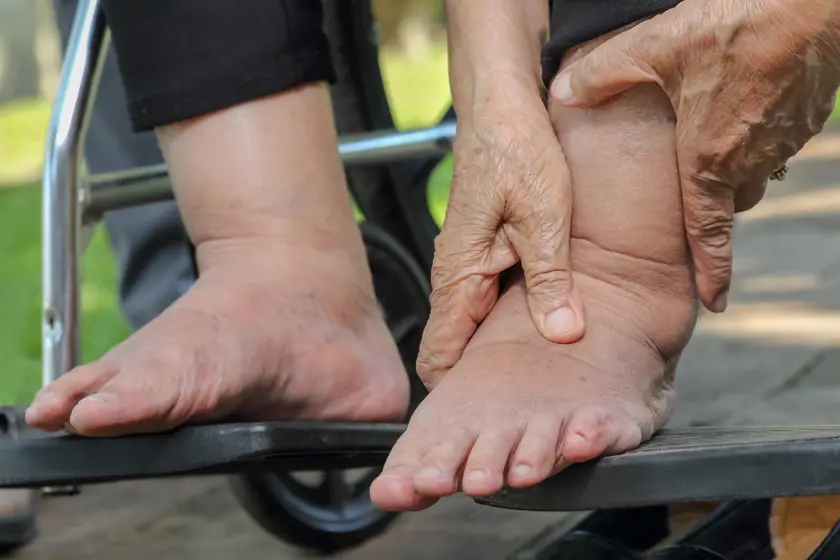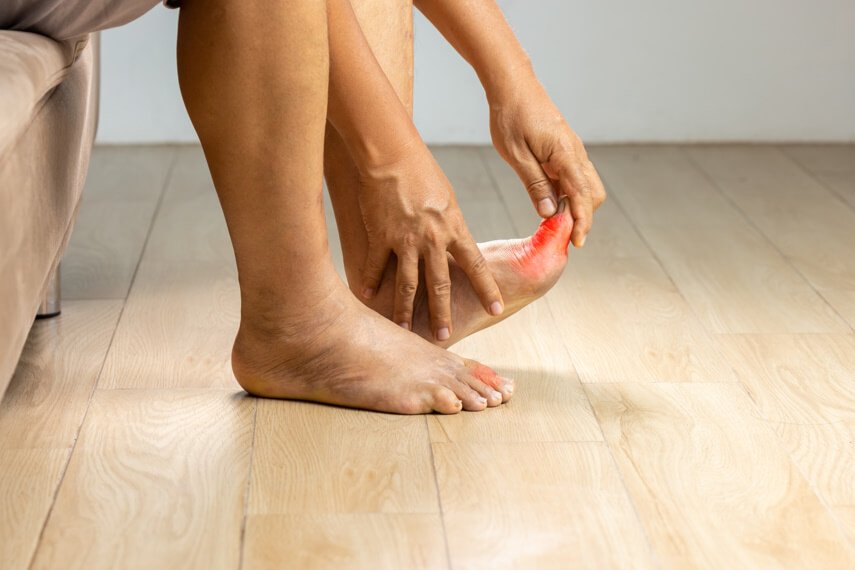Best Exercises to Reduce Foot Swelling and Improve Circulation
Swollen feet can be more than just a minor inconvenience. They may signal circulation issues, fluid retention, or underlying health conditions. While medical advice is important for persistent swelling, simple daily movements can make a significant difference. By focusing on foot swelling exercises, you can not only reduce foot swelling but also improve foot circulation, leading to healthier, more comfortable steps.
Best Exercises to Reduce Foot Swelling
Ankle Pumps
One of the simplest yet most effective exercises for swollen feet, ankle pumps promote circulation in both the feet and calves. Sit or lie down with your legs extended in a comfortable position. Flex your ankles by pointing your toes upward toward your head, then downward as if pressing a gas pedal. Perform this slowly and rhythmically to maximise blood flow. Aim for 15–20 repetitions per foot, and repeat several times a day. Ankle pumps are especially useful if you spend long hours sitting at a desk or during long flights, where swelling is common
Foot Circles
Foot circles are excellent for loosening stiff joints and maintaining mobility. While seated or lying down, lift one foot slightly off the ground and rotate it in a circular motion. Complete 10 circles clockwise and 10 counterclockwise on each foot. This simple movement engages multiple ankle muscles, reduces stiffness, and helps to improve foot circulation. For added benefit, try doing this exercise with your legs elevated on a cushion to further support fluid drainage.
Toe Flexes and Extensions
Strong, flexible toes are essential for balance and everyday movement. Stretch your toes outward, spreading them wide (extension), then curl them in tightly (flexion). Repeat this 10–15 times. This motion not only relieves stiffness but also stimulates blood vessels in your toes, encouraging better circulation. You can perform toe flexes while working at a desk, watching television, or even before bed as a way to relax your feet.
Heel Raises
Heel raises are a classic exercise that strengthens the calves and promotes venous return (the process of blood flowing back to the heart). Stand with your feet hip-width apart, holding onto a chair or wall for balance if needed. Slowly lift your heels off the floor, rising onto your toes. Hold for one to two seconds, then lower gently. Repeat 10–15 times. For a more advanced variation, try performing heel raises on a step, letting your heels dip slightly below the level of the step before lifting up. This deepens the stretch and makes the exercise more effective.
Toe Raises
The opposite of heel raises, toe raises focus on the front of the lower leg. Stand with feet flat on the ground and slowly lift the front of your foot so your toes point upward, keeping your heels firmly on the floor. Hold briefly, then lower down. Do 10–15 repetitions. Toe raises work the shin muscles, which also assist in circulation and ankle stability. This is particularly helpful for people who experience stiffness in the front of the ankle or spend much of the day in flat shoes.
Ankle Alphabet
The ankle alphabet combines fun with functionality. Sit comfortably and extend one leg. Imagine your big toe is a pen and “write” each letter of the alphabet in the air. This multidirectional movement mobilises the ankle joint through a full range of motion and improves flexibility. It is especially useful for those recovering from injury or surgery, as it is gentle yet effective. Try completing the alphabet two to three times per foot daily for best results.
Walking or Light Jogging
When it comes to circulation, few things are as effective as simple walking. A 10–15 minute walk helps your calf muscles contract and relax, working as a natural pump for your veins. If you are comfortable, light jogging can provide an even greater boost. Regular walking also combats the sedentary habits that often cause swelling. For those who cannot jog, even slow-paced walking around the house or office can help reduce fluid build-up and reduce foot swelling.
Calf Stretches
Tight calves can compress blood vessels and limit circulation, making stretches vital. Stand facing a wall with one leg forward and the other extended back. Keep your back heel pressed firmly into the floor while gently leaning forward. You should feel a stretch in your calf. Hold for 20–30 seconds, then switch sides. Repeat two to three times per leg. This exercise is especially beneficial after walking or standing for long periods. For variety, try bending the back knee slightly to target the deeper calf muscle (soleus).
Conclusion
Foot swelling is uncomfortable, but it does not have to become a daily struggle. These simple foot swelling exercises are easy to do at home, require no equipment, and can help restore comfort while supporting long-term foot health. Whether you try ankle pumps, toe stretches, or regular walking, each movement contributes to better circulation and reduced swelling. For persistent or severe swelling, consulting a foot swelling specialist or visiting a foot swelling treatment center ensures that underlying causes are properly managed.
FAQs
What causes foot swelling?
Foot swelling can result from prolonged standing, poor circulation, injury, pregnancy, or underlying medical conditions like heart or kidney disease.
How can exercises help reduce foot swelling?
Regular movement stimulates circulation, prevents fluid retention, and reduces stiffness. Specific exercises for swollen feet strengthen muscles that support healthy blood flow.
How often should I do these exercises?
For best results, aim for 10-15 minutes of exercise two to three times daily, especially if you sit or stand for long periods.
How long before I see improvement?
Mild swelling may improve within a few days of consistent exercise. Chronic cases may take weeks and may also require medical input from a foot swelling specialist.



.jpg)

